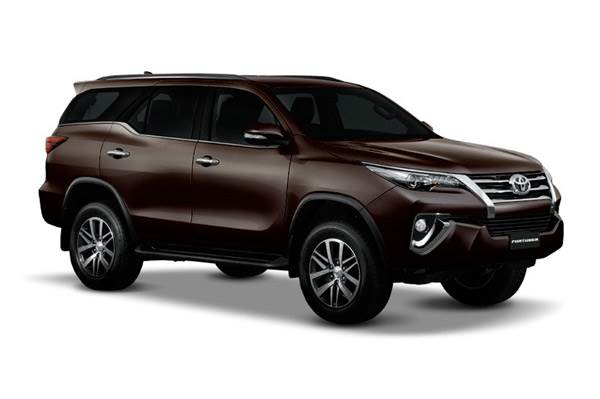The Fortuner has been the king of its segment for some time now. True, it tends to lollop on regular roads, and its interiors are not very attractive, but in terms of rough road ability, brute appeal and general practicality, it is difficult to argue against it. However, its competition (read, the new Ford Endeavour and Chevrolet Trailblazer) are overshadowing it now. In that light, the second-generation Fortuner couldn't have come at a better time.
Here is a list of five essential facts to about the second-gen Fortuner.
1. It is tougher
The first-gen Fortuner was, by no standard, a weakling. The second-gen, however, adds to the big SUV’s air of indestructibility. Toyota has beefed up the new Fortuner’s ladder-frame chassis by reinforcing its side rails and suspension towers and fitting stouter cross members, resulting in a chassis whose stiffness is laudable. The SUV's ability to take a hammering is further reinforced by the large diameter dampers it comes fitted with.
2. It looks more Lexus than Toyota
The second-gen Fortuner ditches the upright-SUV looks of its predecessor for something more rakish, flowing and edgy, bringing it more in line with upmarket cousins from Lexus than its utilitarian siblings from Toyota. Notable elements on the Fortuner are the new grille design, bracketed by thick V-shaped bands of chrome and the unique kink in the window line towards the rear.
3. The interiors are a major step up
The new Fortuner’s cabin, with its leather-wrapped, chrome-sporting dashboard, touchscreen infotainment system and modern instrument cluster looks up to date and stylish, while still affording practicality in terms of storage for knick-knacks. The seats are supportive and comfortable, and the additional width of the car translates into more space in the cabin. The plastics, however, do feel cheap in places.
4. The engines are new
Toyota has launched the new Fortuner with a new 177hp 2.8-litre diesel engine. Despite the unit being smaller than its predecessor's 3.0-litre, it produces more power, and is likely to be more efficient due to its smaller capacity. The unit come mated to either a six-speed manual or six-speed automatic gearbox. A 150hp 2.4-litre diesel engine variant will join at a later stage. The car is available in rear-wheel-drive and all-wheel-drive set-ups. The new Fortuner is also the olny SUV in its class to use a petrol motor. This engine is the same 166hp 2.7-litre four-cylinder unit as on the petrol Innova Crysta and is mated to either a five-speed manual or a six-speed automatic gearbox. The petrol engine is only available in two wheel drive.
5. Improved ride
The stiffer chassis takes some load off the suspension to deliver suppleness and grip. As a result, Toyota has been able to fit the new Fortuner with slightly softer springs and more absorbent dampers, which will improve its ride.
With many of its strengths reinforced (literally, in the case of the chassis), the new Fortuner seems ready to assume its predecessor’s place on the throne. However, the competition, this time around, is tougher, raising the question: Will the new Fortuner assume the mantle of its predecessor, or will it cede it to keen rivals?
Also read:



Comments
Member Login
Personal Details
No comments yet. Be the first to comment.